Katie Byerly has a knack for finding rare native plants. She’s also on YouTube at Iowa Prairie Girl. -promoted by Laura Belin
Serious birders compile a “Life List.” A list of all the bird species they have ever encountered.
When I seriously started studying Iowa wildflowers three years ago, I soon realized that finding a fall gentian is considered a bonus during a wildflower search. I remember being thrilled finding my first bottle gentian. As I added more gentian to my “life list”–cream, stiff, and downy–it began to seem as if the elusive fringed gentian, which inspired so many, was eluding me.
Finally this August, I was so pleased when I stumbled upon a fringed gentian in a wonderful little fen located in the southeast corner of Cerro Gordo County. It turned out to be Lesser fringed gentian (Gentianopsis virgata), sometimes known as smaller fringed gentian.
My friend and wildflower mentor, Carolyn Fischer, called the low wetland a “special wonderland.” It is so true! Growing along with the gentian are other just as spectacular plants like common boneset, Riddell’s goldenrod, fen grass of Parnassus, and both slender-leaf and earleaf false foxglove. Carolyn and I just stood there shaking our heads in sheer delight at the wonder this little piece of marshland was producing. It felt like everything there was growing in a miniature version of itself.
View approaching the fen:
Minnesota Wildflowers notes that the Lesser Fringed Gentian “is easy to miss in the wild, as it’s often spindly, low to the ground and hidden in taller grasses. The spot of bright blue is an eye-catcher for those who are observant.” I can confirm: during my first trip to the fen, I almost missed this delicate beauty. However, after spotting the first, I soon found there were at least two dozen flowers blooming on August 31.
Imagine my amazement and pleasure when I came back to the fen two weeks later to find hundreds and hundreds of lesser fringed gentian blooming!
Large colony of lesser fringed gentian in the wonderland:
As always, my wildflower hunting dog, Prairie Dog, is happy when we find new flowers. I know she senses my new flower joy.
I agree with the Illinois Wildflowers website, which writes that fringed gentian “have an unearthly beauty that is positively stunning. . . and ranks amongst the most attractive of all wildflowers.” This petite version is shorter than the Fringed Gentian with smaller flowers and leaves. According to Illinois Wildflowers, this wet habitat loving plant is even less common than the fringed gentian.
A beautiful display of gentian:
Leaves of lesser fringed gentian are small and slender (1 to 1 1/2 inches long and less than a 1/3 inch wide). They are opposite, toothless, hairless and stalkless.
I took this picture on August 31, before the flower opened. You are more likely to find lesser fringed gentian open on a sunny day.
As described in Minnesota Wildflowers, these plants have a single bloom on the end of a slender stalk. The trumpet-shaped, royal blue to blue-violet flower is 1 to 2 inches long. With close observation of the four lobes making up the flower, it is easy to see where the term fringed comes from. Each lobe’s edge is finely toothed. They remind me of a frayed hem on a beautiful royal princes dress.
Two close views of the delicate frayed edges
The lesser fringed gentian flower is enclosed by a green calyx with 4 unequal lobes. Sometimes the lobes are round and tapered. On other plants, they are narrower, with a pointed tip.
The next two pictures show lesser fringed gentian growing alongside Riddell’s goldenrod.
An eight-legged visitor next to the yellow/orangish stamens of a lesser fringed gentian flower:
While the hunt for the lesser fringed gentian is over, I so look forward to going back to this wonderland next blooming season. I have more alluding gentians to find.

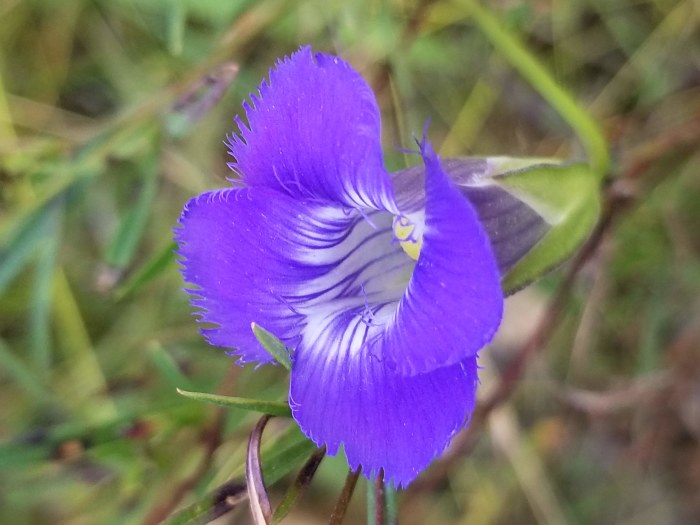
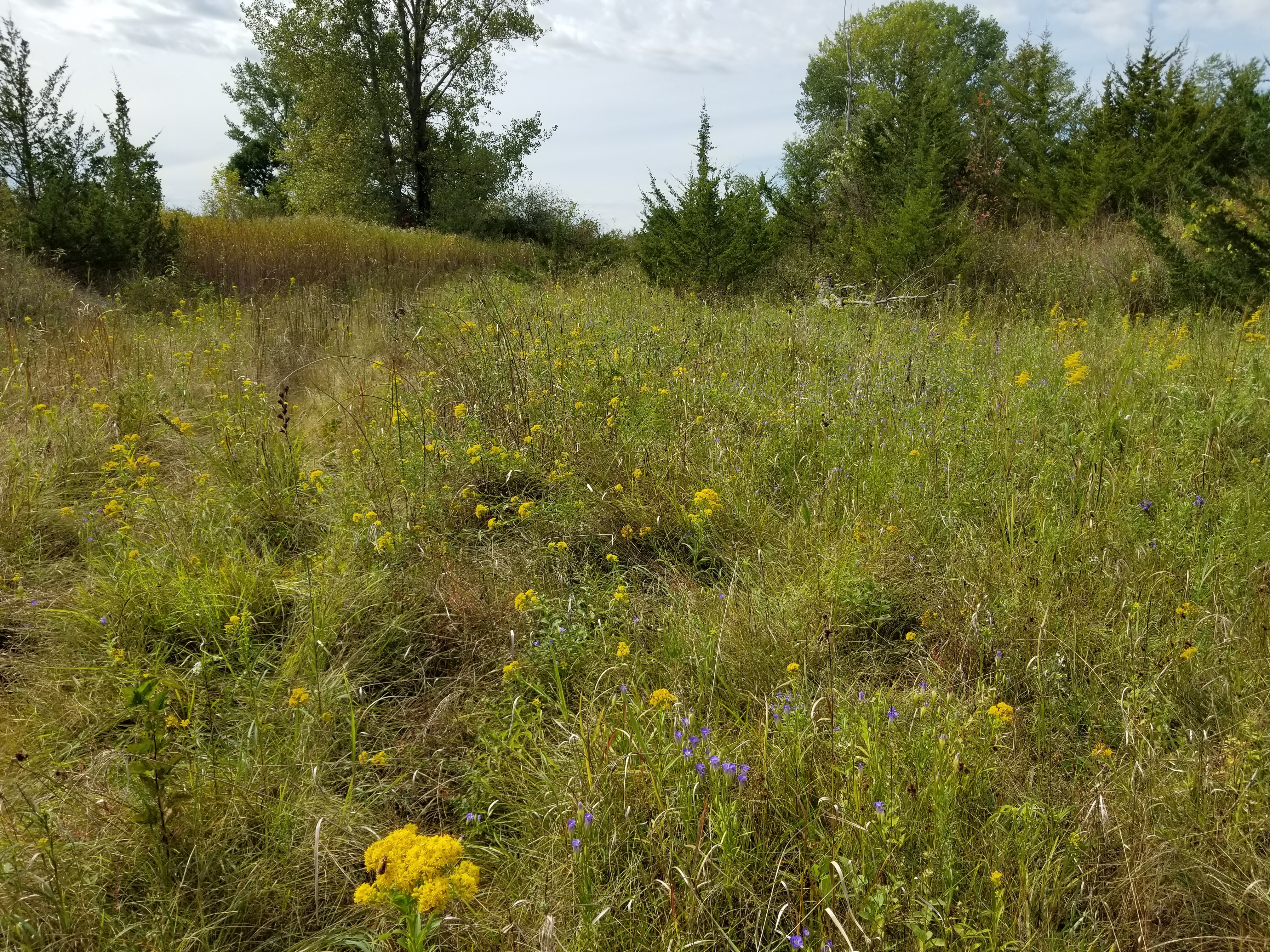
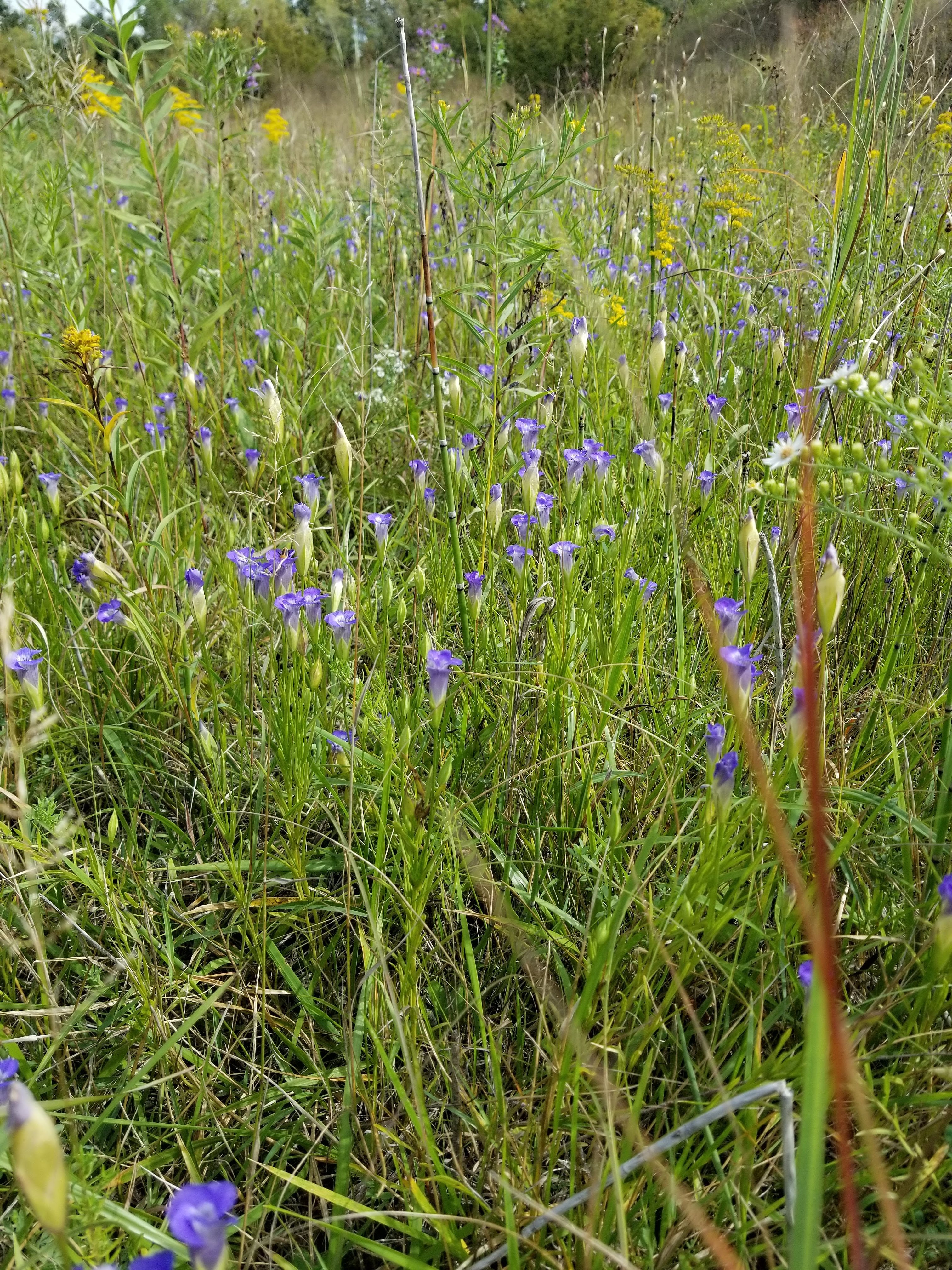
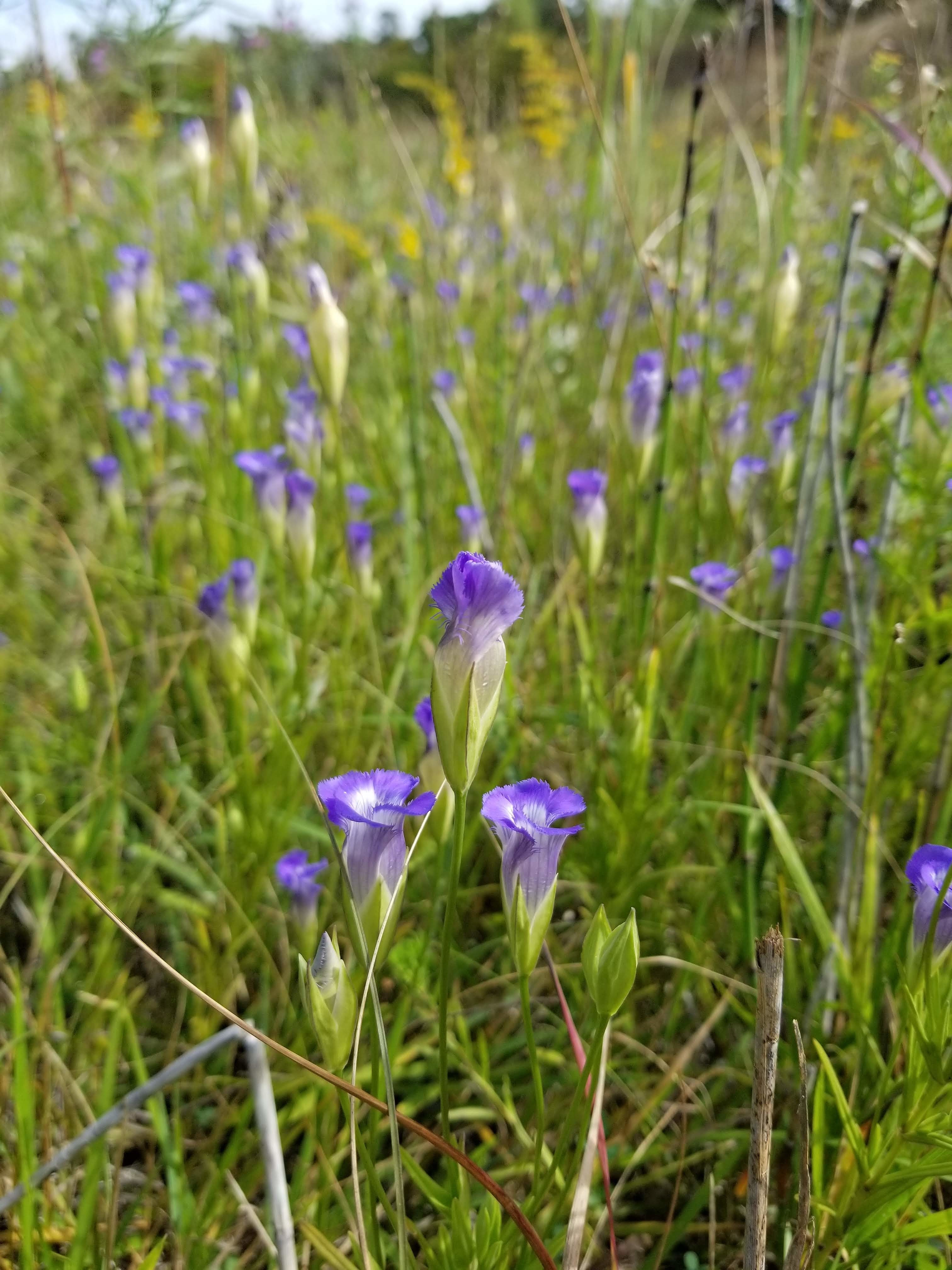
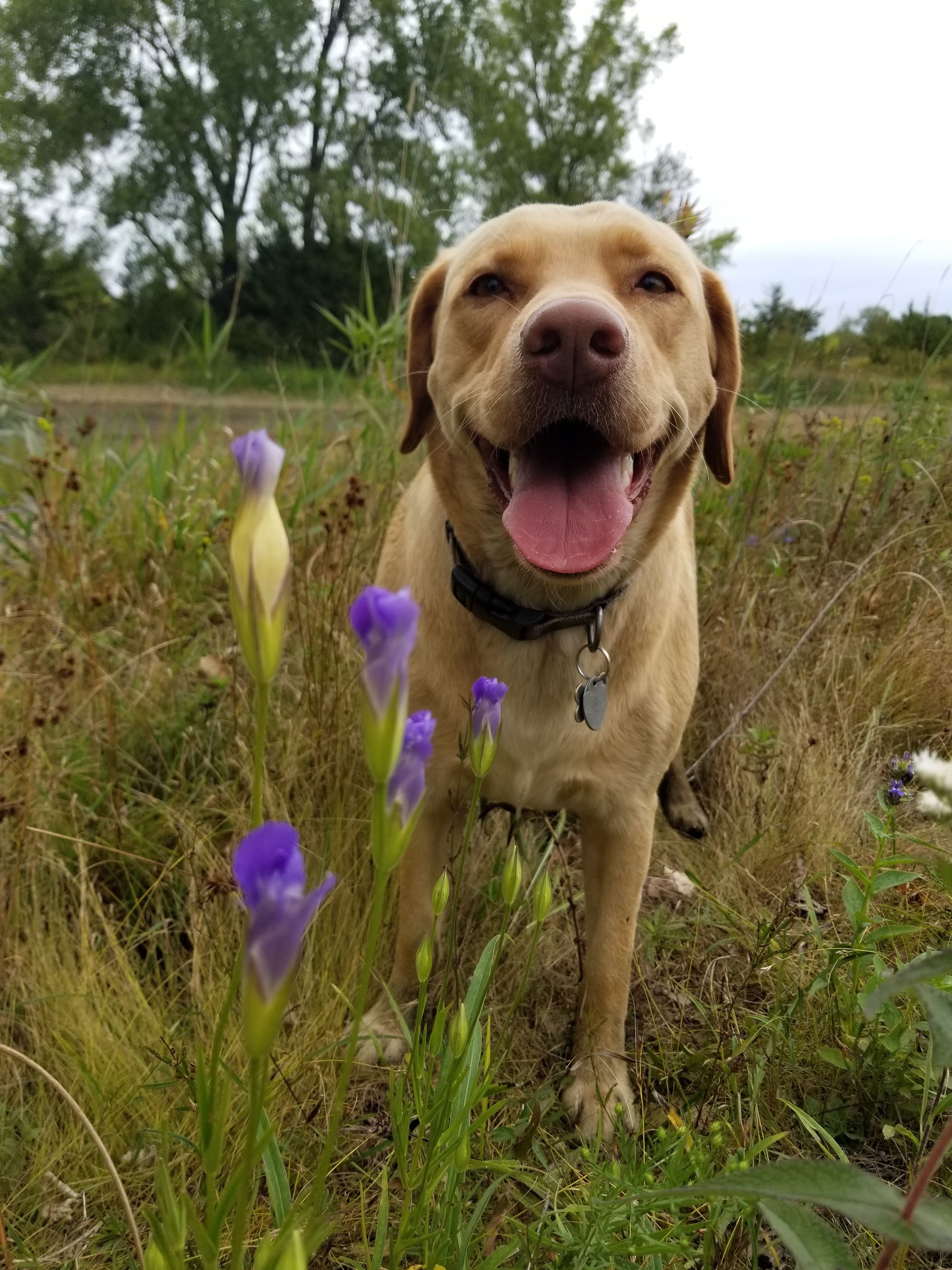
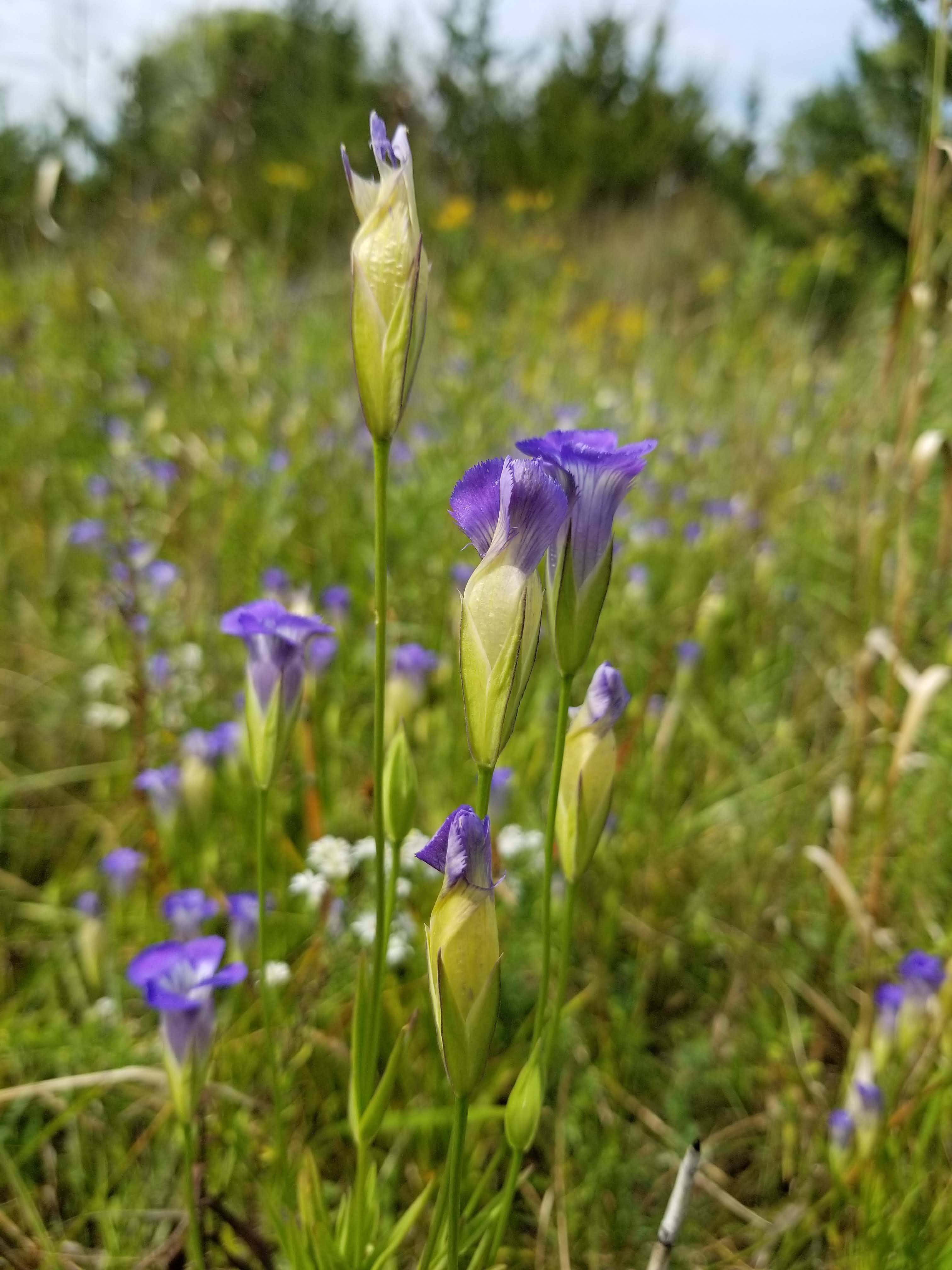
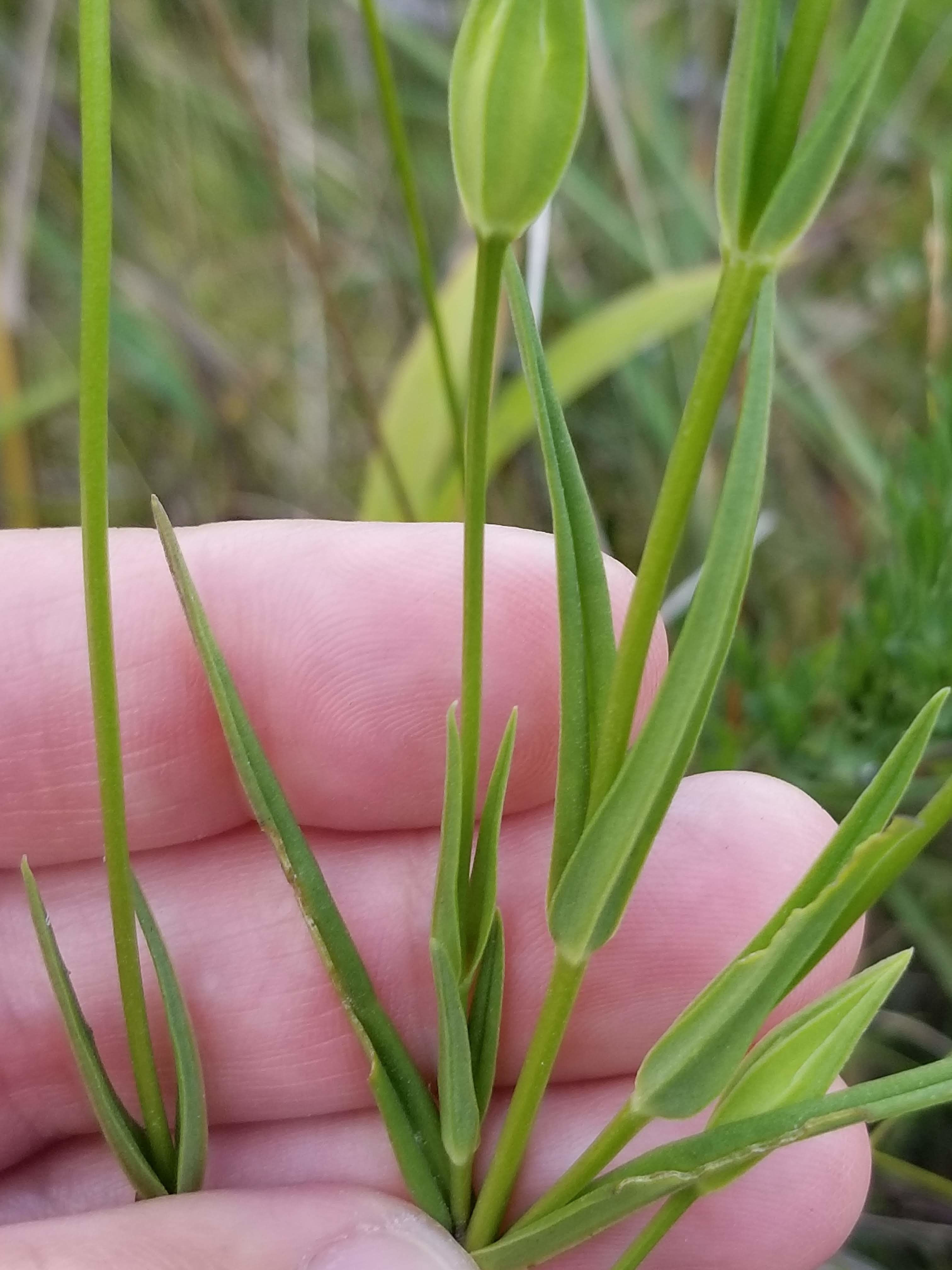
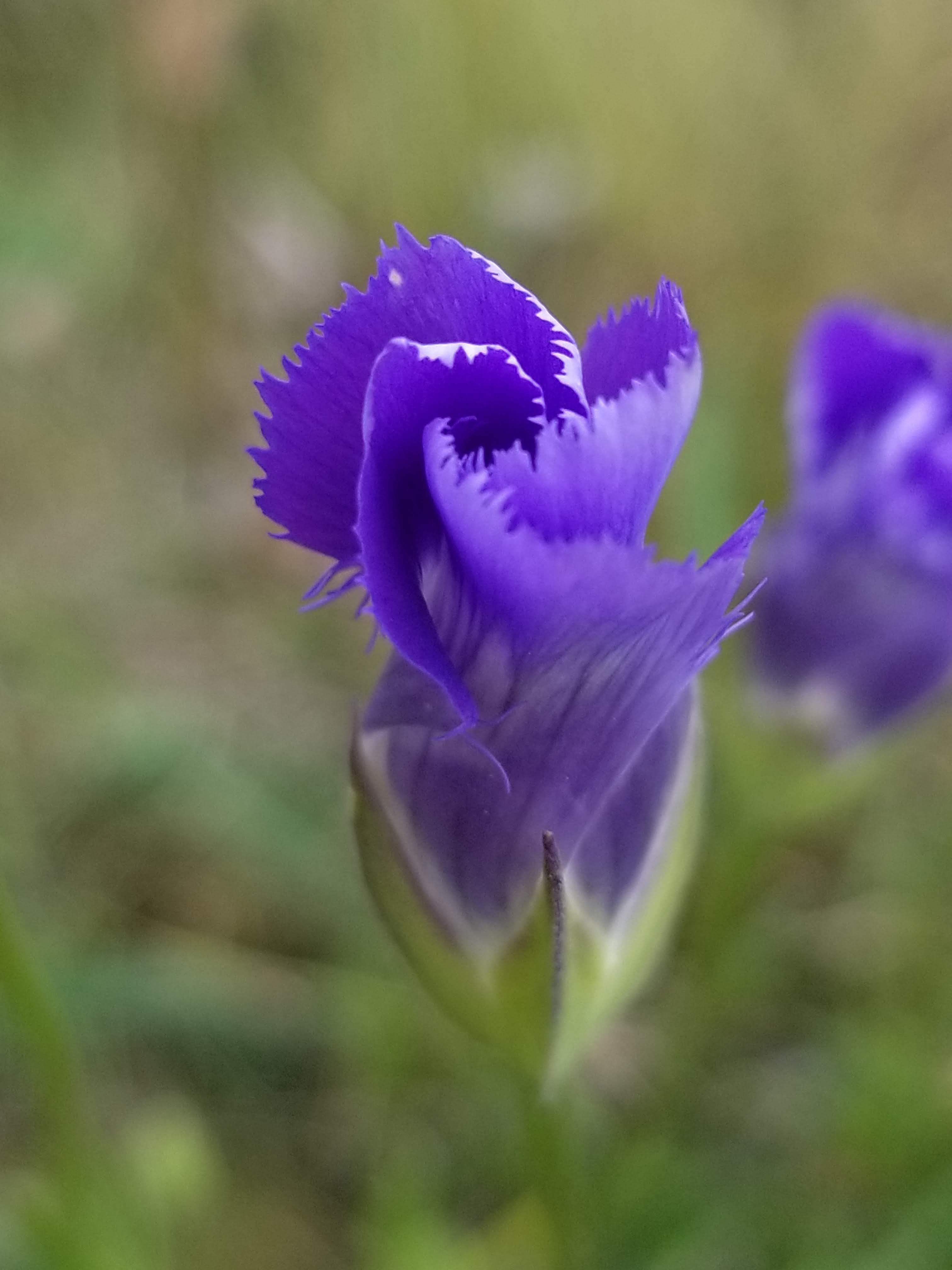
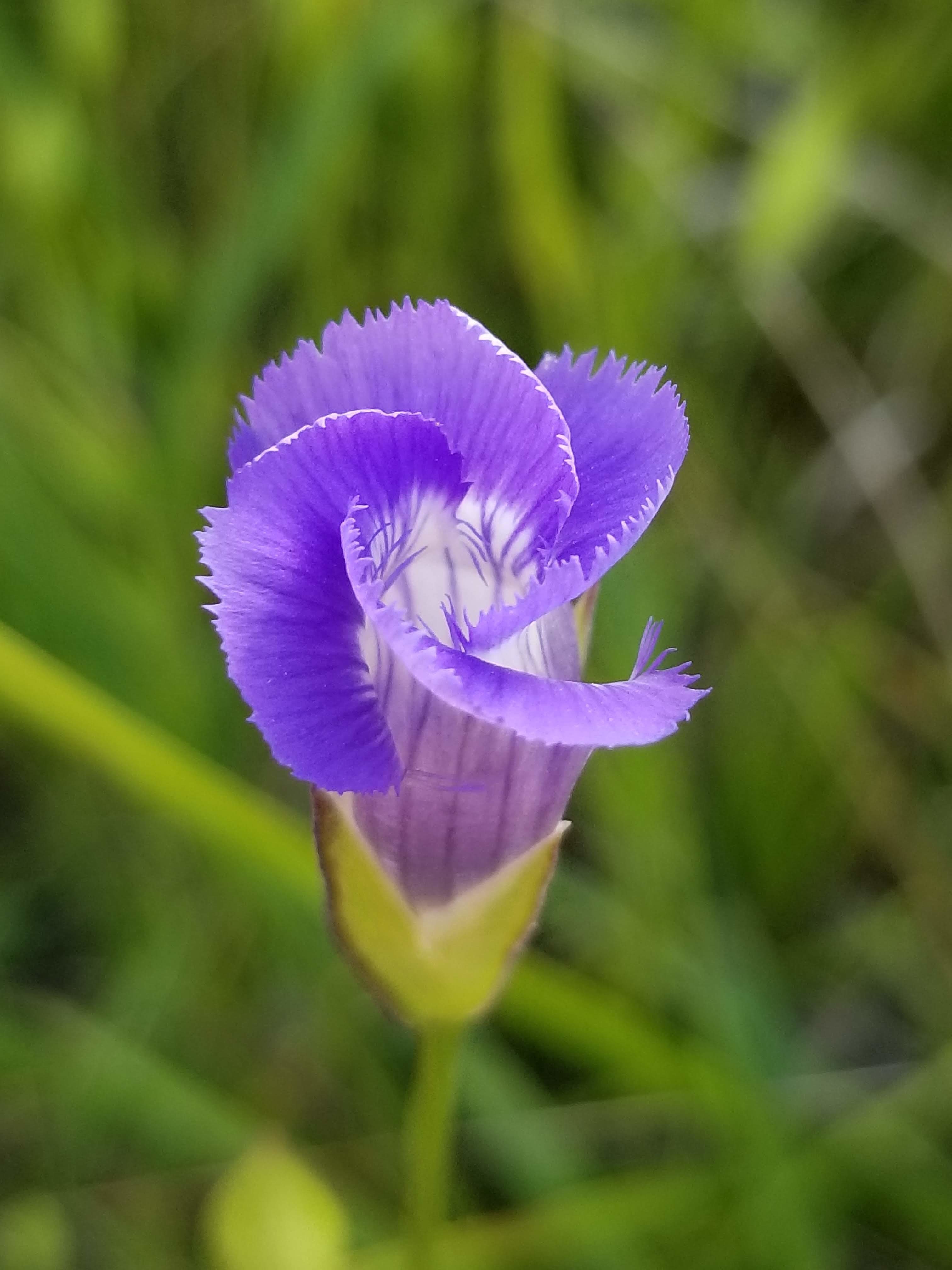
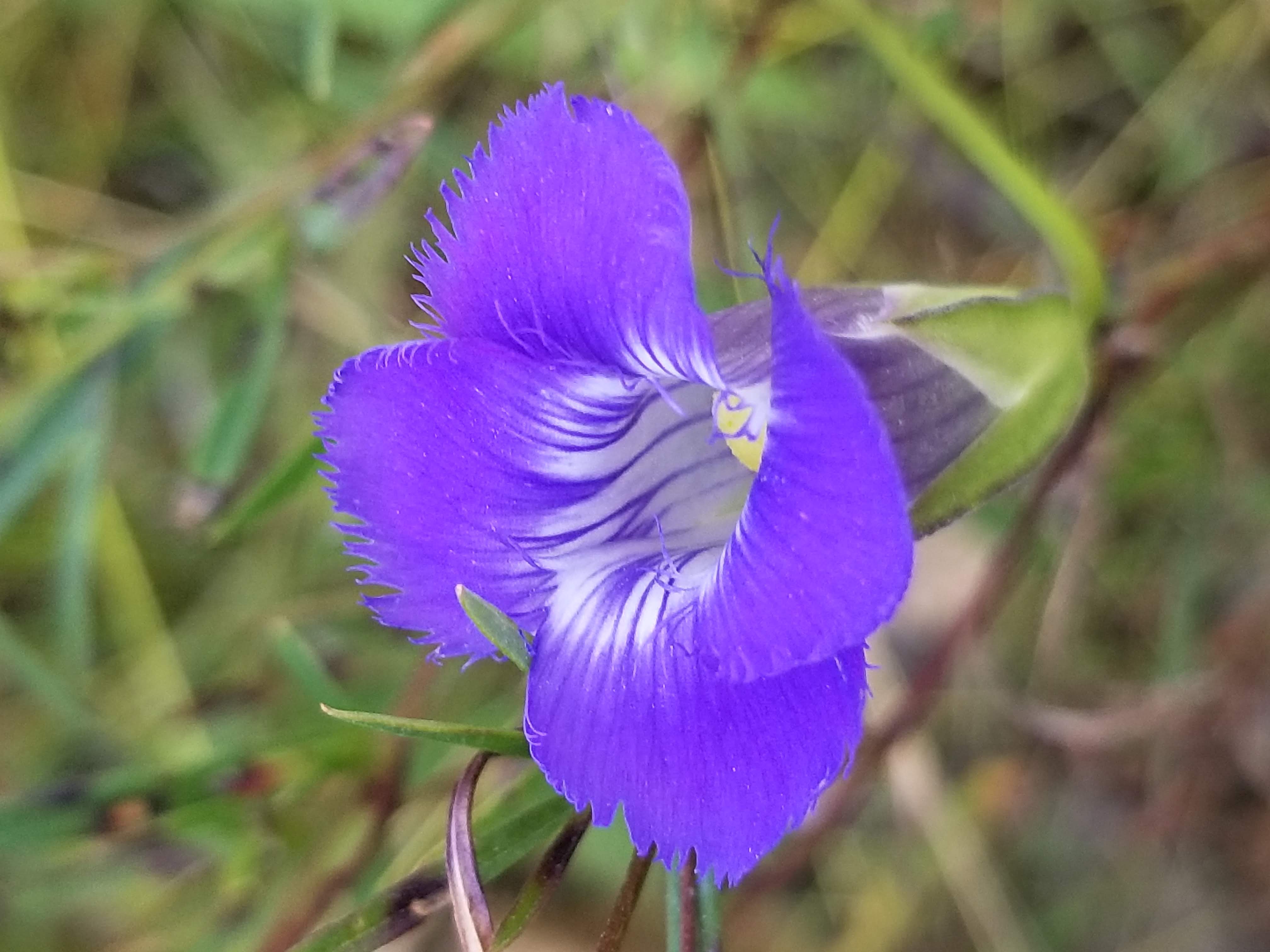
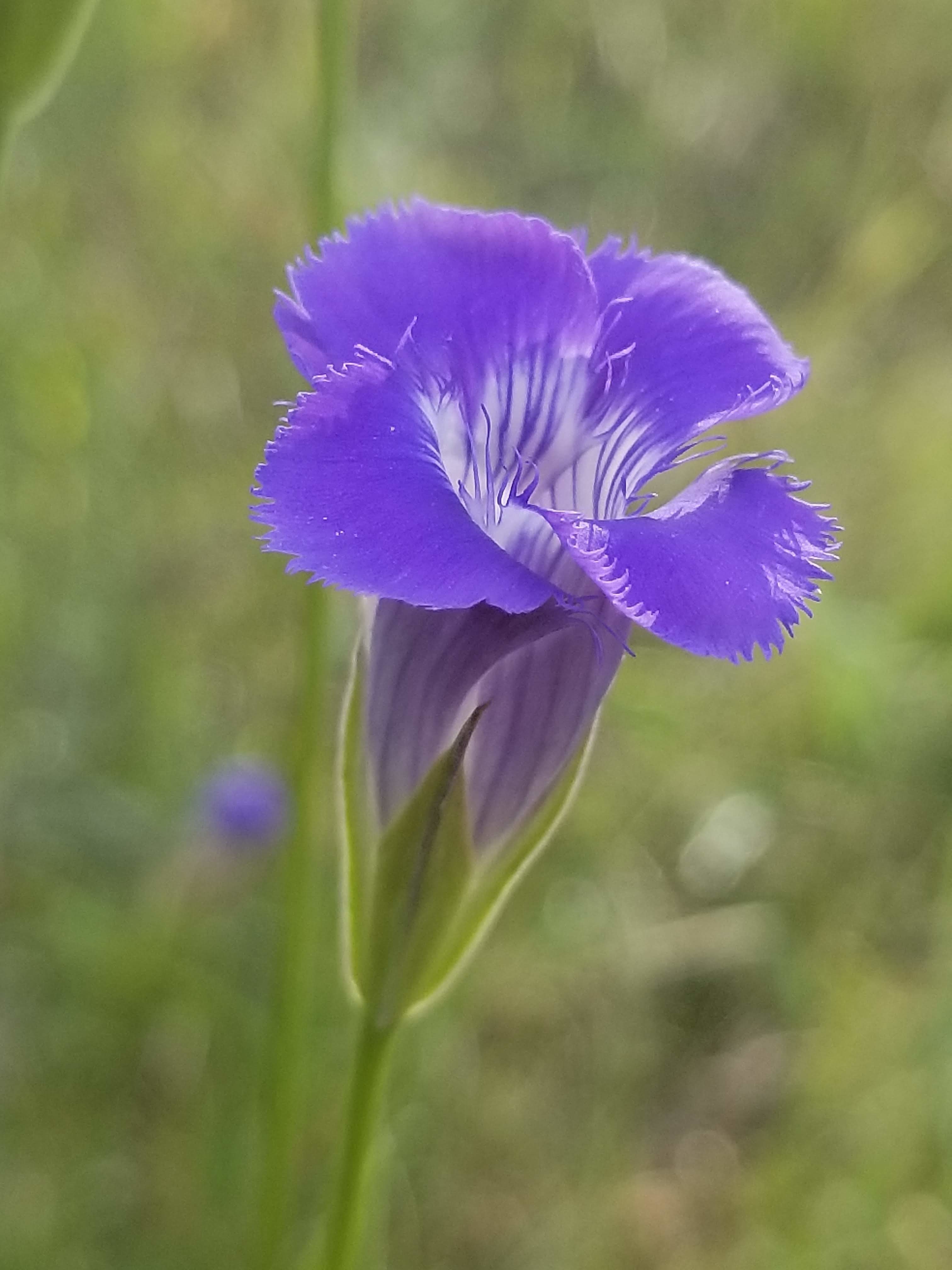
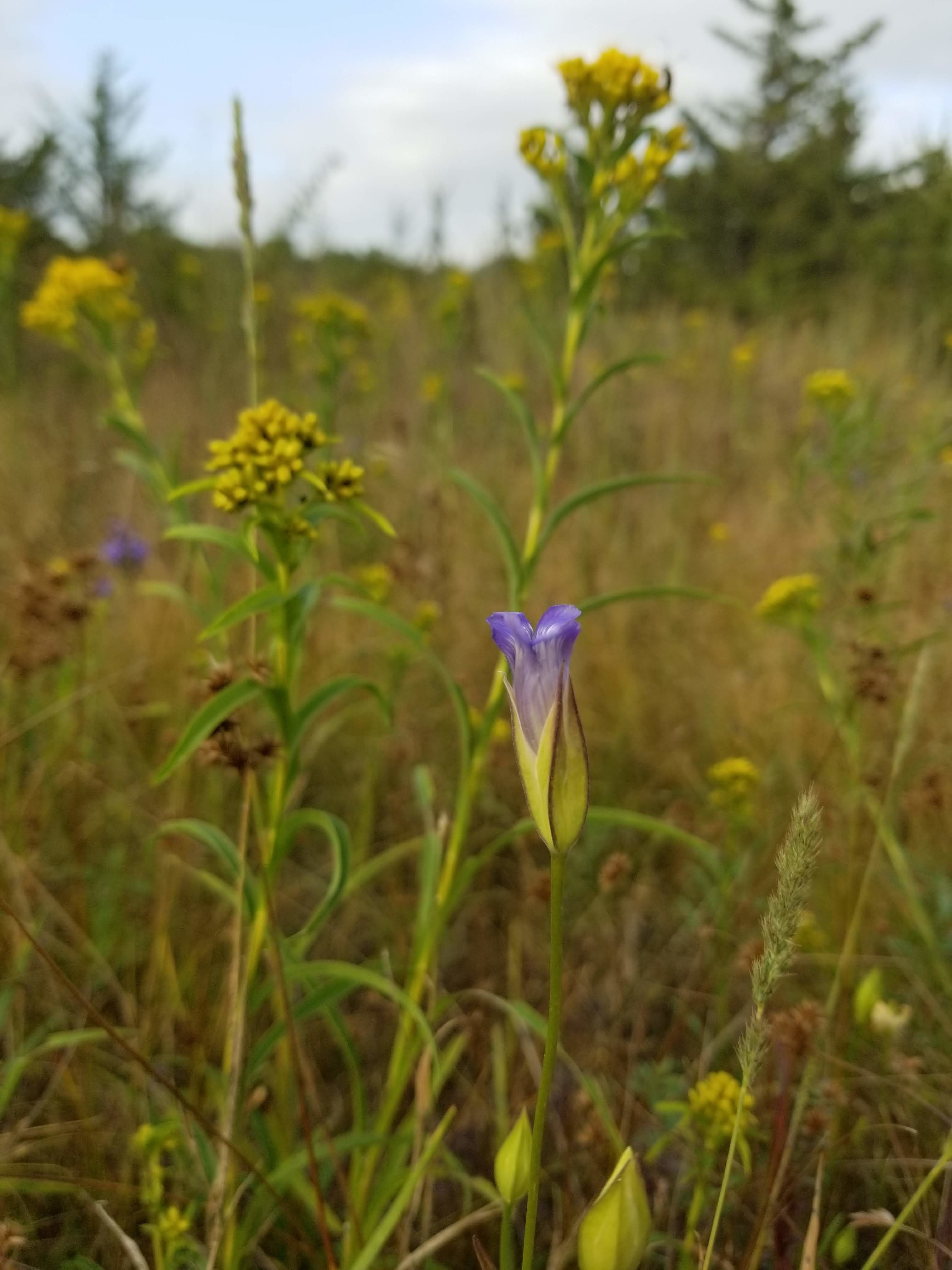
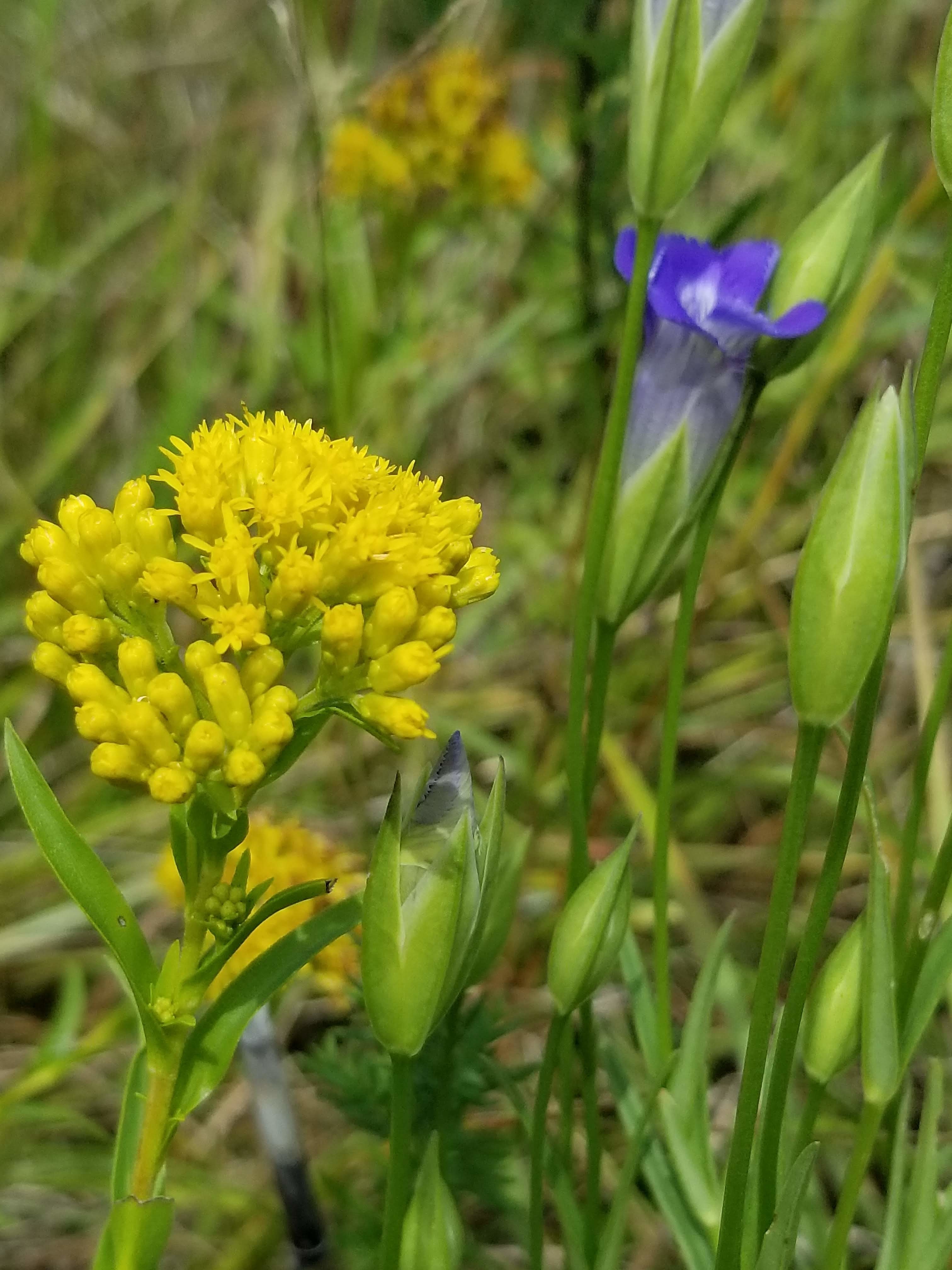
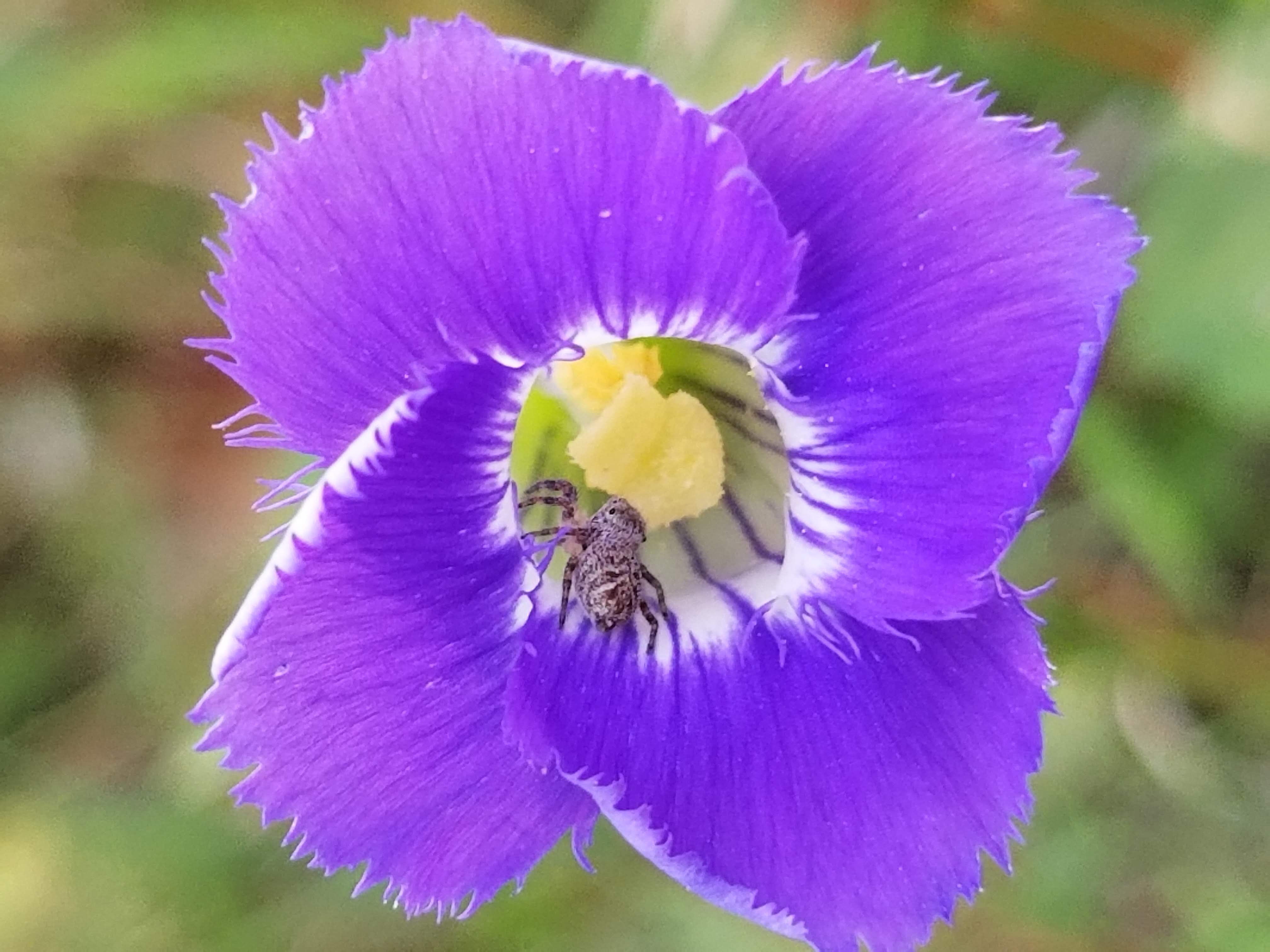
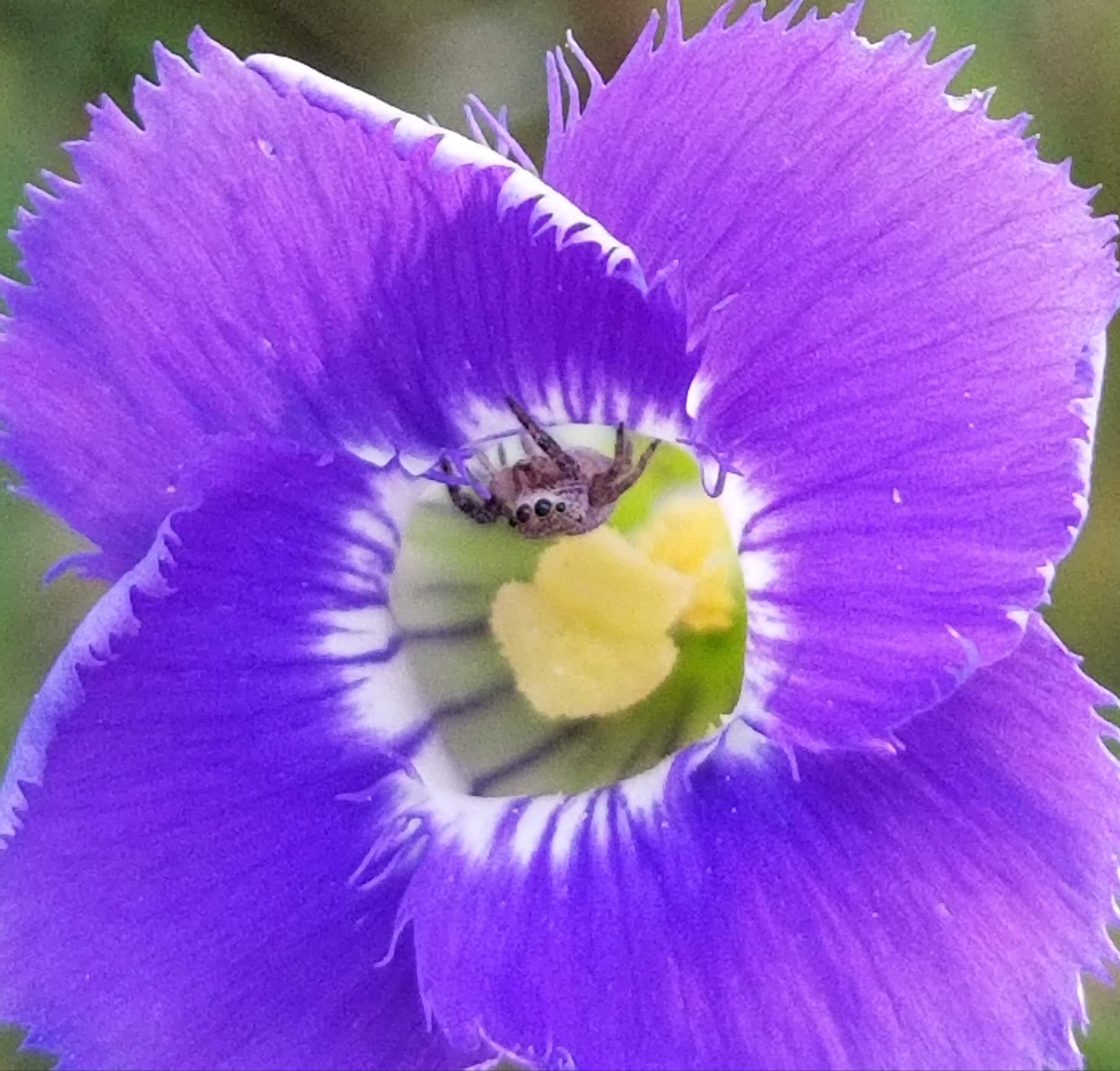
1 Comment
Beautiful photos
I really appreciate being able to see these images of lesser fringed gentian, which I have never seen in person. The blossoms are so beautiful, and what a wonderful flower to feature at this time of year. Thank you, Laura and Katie.
I am extremely fortunate to own a special piece of land that has a small population of the “regular” fringed gentian, Gentianopsis crinita, as well as some grass of Parnassus and other unusual plants. My land has been permanently protected, to the extent that is legally possible. The future challenge will be to try to ensure that the land will always be well-managed. If a natural area like a virgin wet prairie does not get needed management and ends up being invaded and taken over by willows, cottonwoods, and other woodies, it can lose the rare flowers and other species that make it special.
Since this is a political blog, I’ll point out briefly that if the DNR doesn’t get the funds it needs to be able to do land management work such as prescribed burning and woody removal, “protected” state natural areas can also deteriorate and essentially disappear. And the DNR has not been getting the funds it needs..
Thank you to all the Iowans, professional and non-professional, who are doing your best to protect and provide needed management for Iowa’s natural areas, both public and private. Your dedication is appreciated.
PrairieFan Wed 16 Oct 4:29 PM